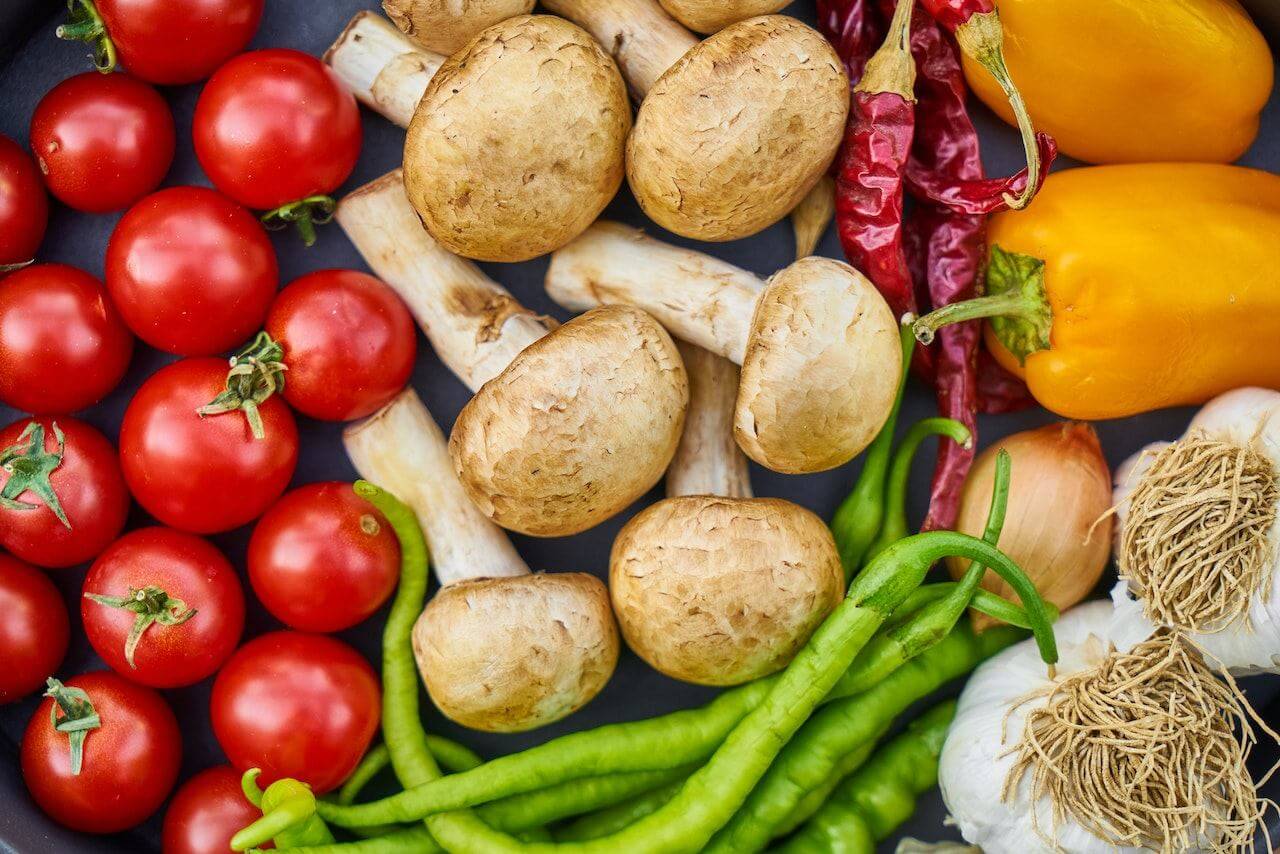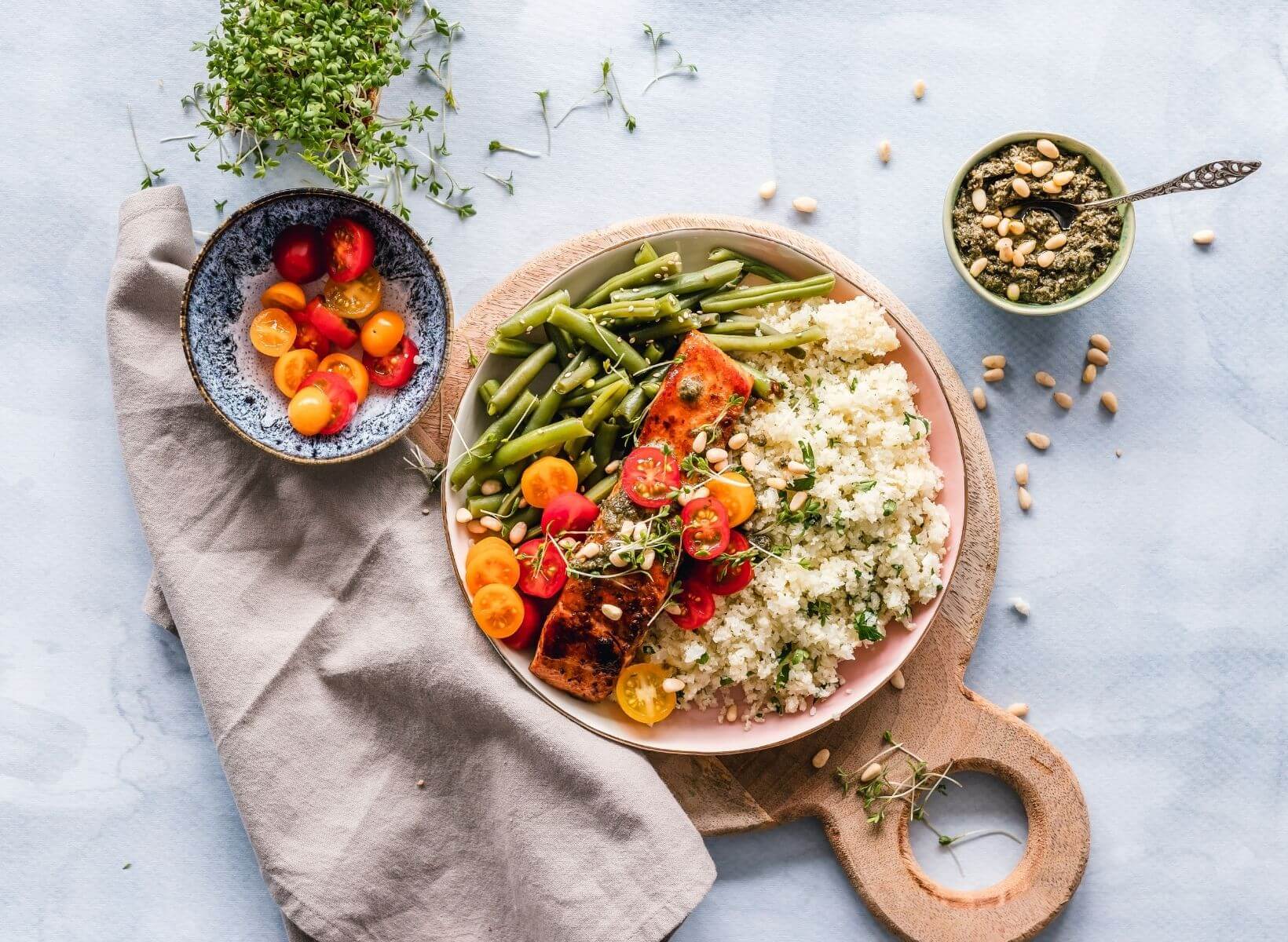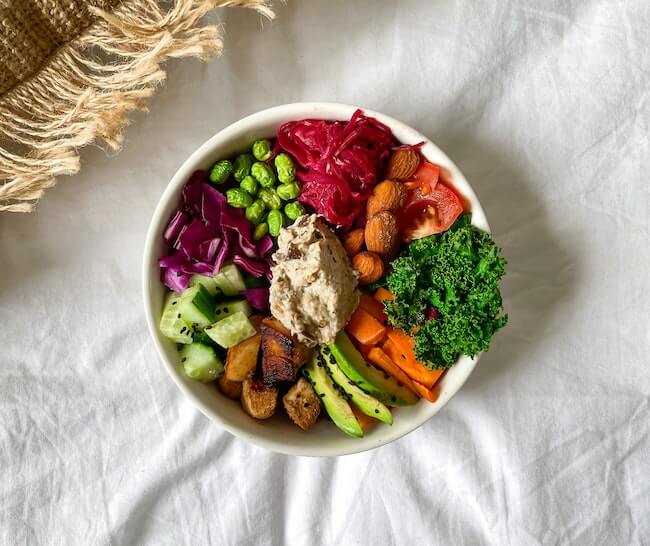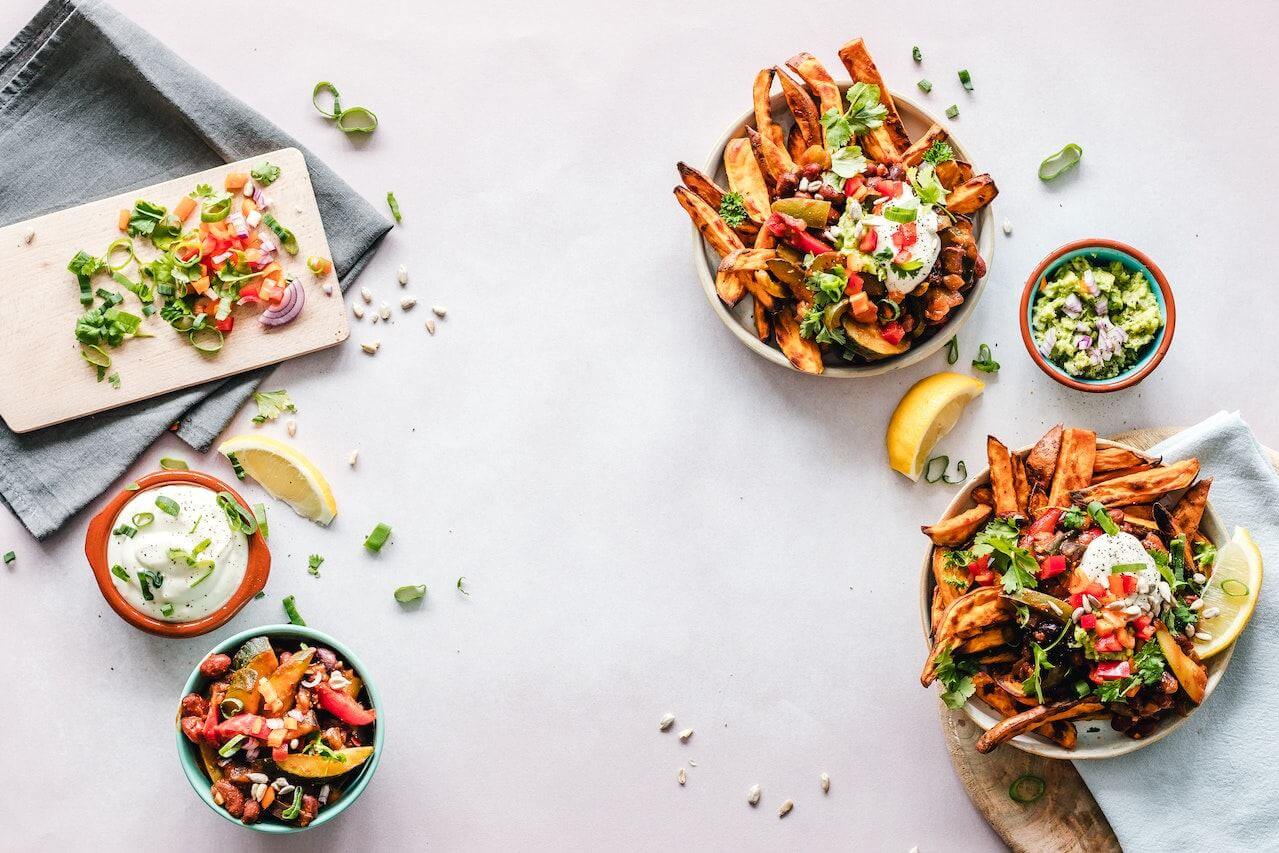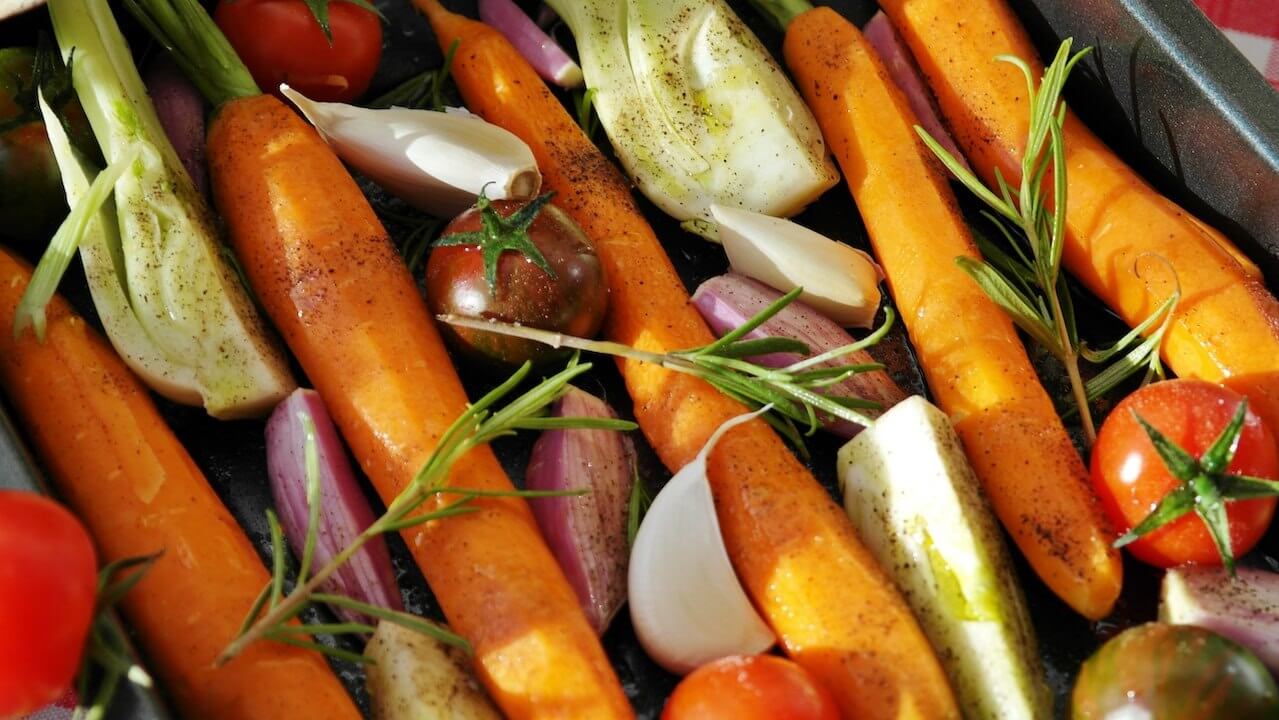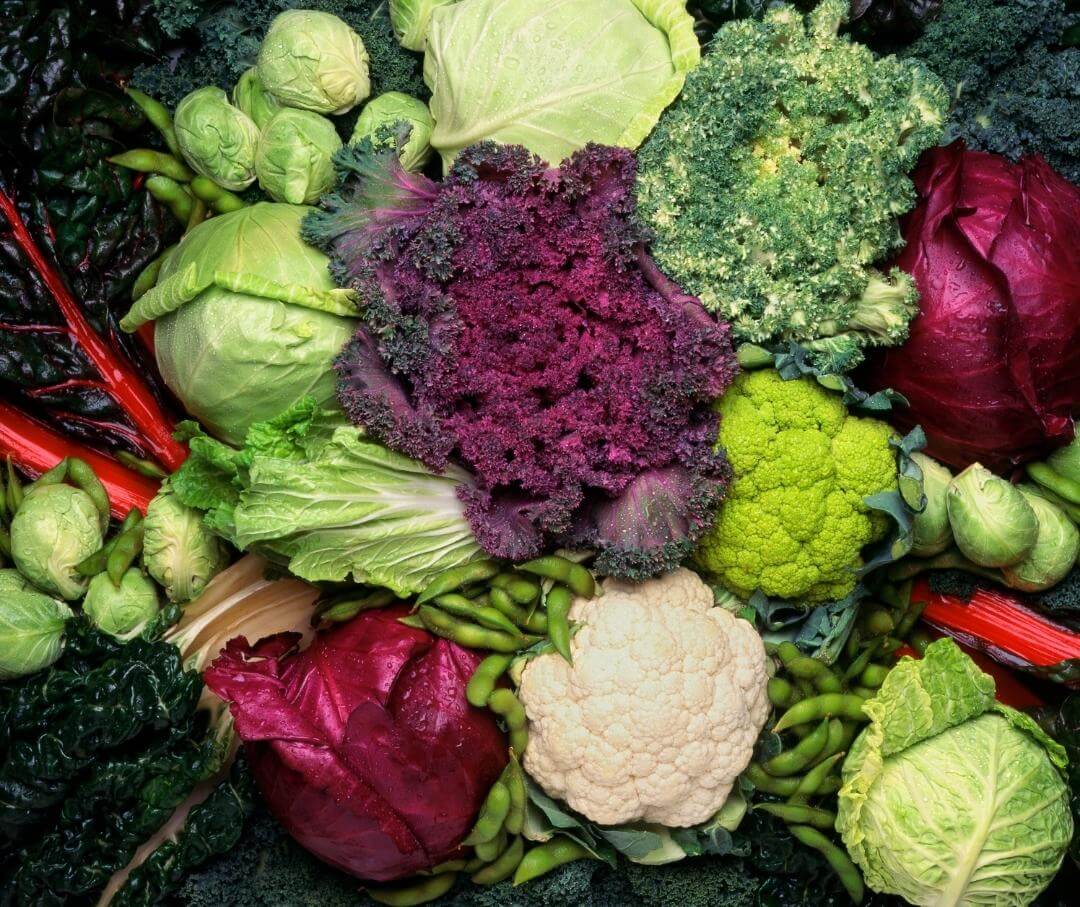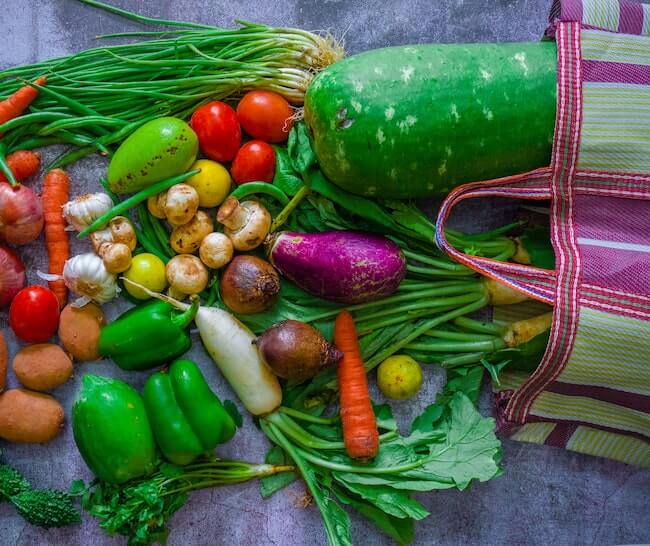We all know vegetables are good for our health since they are high in fiber, vitamins, minerals, and antioxidants.
But, did you know that research continues to show that higher consumption of vegetables and fruit is associated with a lower risk of all types of mortality, specifically cardiovascular mortality?1
Once a threshold of five servings of combined fruits and vegetables per day is met, a significant reduction in disease occurs. For example, people who ate more than five servings daily had a 26 percent lower risk of stroke than those eating three or fewer daily.2 Another meta-analysis found people experienced a 4 percent lower risk of coronary heart disease for each additional ½ cup serving of fruits and vegetables they consume, proving that each additional serving of vegetables multiplies health benefits!3
A large meta-analysis showed that intake of cruciferous vegetables (broccoli, Brussels sprouts, cabbage, kale, cauliflower, and collard greens) impacts 24 health outcomes, with the most substantial effect seen with gastric, lung, endometrial, and all-cause mortality.4
Vegetables are also essential in keeping blood sugars stable. They are nutrient-dense, which means they are high in fiber, vitamins, and minerals in relation to their low-calorie intake. Fiber slows the absorption of carbohydrates, leading to the ideal slower rise and fall of glucose levels.
{{mid-cta}}
How to Eat More Veggies Everyday
Can’t stand vegetables? Here are some tips on how to overcome this barrier and reap the benefits that veggies have to offer.
Include Vegetables in Your Breakfast
You’ll feel like a superstar knocking out one or two servings before 9 am! Most breakfast meals include grains, dairy, or fruit but no vegetables. Here are some easy ways to add vegetables to start your day.
- Omelet: add spinach, onions, scallions, mushrooms, bell peppers, and tomatoes. You can use leftover veggies from dinner the night before.
- Whole Grain English Muffin: add spinach, tomatoes, cucumber, spinach, or kale to your muffin with a fried egg.
- Smoothies: blend spinach or frozen riced cauliflower in all your smoothies (you won’t even taste it).
- Cauliflower Eggs: scramble eggs with riced cauliflower for some extra veggies.

Make Vegetable Soup
Soups are a great way to enjoy multiple servings of vegetables in a single dish. Soups can be a balanced mix of protein, whole-grain carbohydrates, fiber-rich vegetables, and healthy fat. Leftovers can be frozen into meal-sized portions for a future quick and healthy meal.
You can cook all kinds of vegetables with broth and then puree them to make a base for soup. Vegetables can be added to broth or cream-based soups in small or large quantities.
Here are some healthy vegetable soups to try out:
- Beef Vegetable Soup
- Tomato and Basil Soup
- Vegetable Broth
- Autumn Harvest Soup
- Chicken Tortilla Soup
Snack on Vegetables with Dips
Choosing a dip with a protein source and healthy fat stabilizes blood sugar levels. In addition, pairing raw vegetables with a healthy dip will help keep you full between meals.
These snacks can be prepared at the beginning of the week. They stay fresh for several days in the refrigerator and prevent you from grabbing chips, cookies, or French fries.
- Baby Carrots with Hummus
- Celery Sticks with Natural Peanut Butter
- Sliced Cucumbers with Guacamole
- Sliced Bell Peppers with a Greek Feta Cheese Dip
- Cherry Tomatoes and Soft Cheese
If you crave fries, make a healthy version at home by grabbing whole potatoes. You can cut them into your desired shape, bake them, or use an air fryer!
Try Veggie Noodles
Veggie noodles or spirals are a wonderful way to boost a meal with vegetables and reduce the carbohydrate load from pasta. Regular pasta is usually refined and lacks fiber and nutrients.
You can make your veggie noodles with a spiralizer that cuts them into noodle-like shapes. In place of a spiralizer, you can shred, slice, or cut the vegetables into a preferred shape. Veggie spirals can be purchased ready-to-eat in the frozen section made from various vegetables like zucchini, carrots, sweet potatoes, spaghetti, or butternut squash.
After making the spiral or noodles, you can replace the pasta and add sauces, meat, or vegetables.
Substitute with Cauliflower
Cauliflower can reduce the carbohydrate content of dishes like rice and pizza crust. Substituting part or all of the rice with “riced” cauliflower can help you stabilize your blood sugar, lose weight, and still enjoy these dishes without sacrificing your goals.
You can buy premade cauliflower pizza crusts or make your own to boost the vegetable content of a traditionally highly refined grain meal. Purchasing frozen riced cauliflower can help you keep this versatile vegetable on hand for any recipe.
Prepare Vegetable Wraps
You can cut refined grain calories and carbohydrates while adding nutrient-rich vegetables to your meals by swapping bread or tortillas for vegetable wraps. For example, a slice of lettuce is about one calorie, and a portobello mushroom slice is about 20 calories. A standard bun is around 240 calories.
Lettuce wraps are a delicious swap that adds crunch to tacos and sandwiches. Vegetables that can be used as buns include bell peppers, lettuce, cabbage, and sliced portobello mushrooms or sweet potatoes.
A burger or sandwich can be ordered with extra lettuce and no bun at a restaurant for an easy lower, carbohydrate meal. Try these heavy vegetable ideas
- Bell pepper sandwiches
- Lettuce wraps
- Spring rolls
- Sweet potato toast
Make Vegetable Chips
If you miss the crunch of chips, you can switch it up by making a veggie version. Slice your vegetable of choice, season with garlic and pepper, and bake them in the oven or air-fryer. Some vegetable chips can be quickly made in the microwave.
All varieties of potatoes, kale, beets, turnips, and carrots work well to make a crunchy, healthy vegetable chip at home.
Make Green Smoothie or Juice
Green smoothies are a great way to get more than one serving of vegetables at a time. You can use a blender or juicer at home.
The smoothie will also retain the fiber and phytonutrients from the vegetables or fruit. However, if you use a juicer, this method will removes the pulp (or fiber) and can be less filling.
To make your own smoothie, start with a half cup of whichever green vegetables you have (frozen or fresh) and increase as you find your favorite flavor blends.
Some of my favorites to include in a smoothie are:
- Celery
- Spinach
- Kale
- Parsley
- Cucumber

Add Vegetables to Your Sauces
Add more vegetables as you make a sauce, like marinara or roasted red pepper sauce. Onions, peppers, tomatoes, carrots, and even spinach can be added with little change to the flavor. If you make a large batch, you can freeze leftover marinara or roasted red pepper sauce for a future meal.
Adding more vegetables to sauces, salsas, or homemade dressings will help boost your vegetable intake. This is also a great way to use any leftover vegetables in your fridge before they spoil. Try these delicious and healthy vegetable recipes.
- Green salsa with added cucumber, green tomatoes, onions, and cilantro
- Pico de gallo with tomatoes, garlic, bell peppers, onions, jalapenos, and cilantro
- Roasted red pepper sauce with chopped peppers, tomatoes, garlic, and onions
- Chipotle ranch dressing with tomatoes and red bell peppers
Add More Vegetables to Any Favorite Recipe
A simple but effective way to eat more vegetables is to double or triple the number of vegetables on the ingredient list of any favorite recipe. This is a fool-proof way to boost your vegetable intake.
Some recipes where this strategy can easily be done include:
- Beef and broccoli (even substitute part of the rice with cauliflower rice)
- Spaghetti sauce (extra tomatoes and onions and serve over veggie spirals)
- Chicken tortilla soup (extra corn, tomatoes, onions, zucchini, jalapenos, peppers, and cilantro)
Learn How to Improve Your Nutrition and Eat More Mindfully with Signos’ Expert Advice
Using a Signos’ CGM can improve your health. The Signos CGM lets you see how specific foods and increasing your vegetable intake influences your glucose level positively. This easy-to-use tool will help you establish healthy eating habits and track your diet. Signos has a database of nutrition and health articles written by experts to guide you on your health path. Take a quick quiz to determine if Signos is a good fit for you.
- Item 1
- Item 2
- item 3

